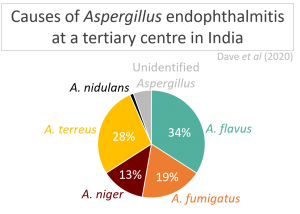Submitted by Aspergillus Administrator on 2 December 2008
 The discovery of a sexual cycle in the pathogenic fungus Aspergillus fumigatus has just been described in Nature by Scientists from The University of Nottingham and University College Dublin. Aspergillus fumigatus is an opportunistic human pathogen in individuals with weakened immune systems, causing potentially lethal invasive infections and is also associated with severe asthma and sinusitis.
The discovery of a sexual cycle in the pathogenic fungus Aspergillus fumigatus has just been described in Nature by Scientists from The University of Nottingham and University College Dublin. Aspergillus fumigatus is an opportunistic human pathogen in individuals with weakened immune systems, causing potentially lethal invasive infections and is also associated with severe asthma and sinusitis.
The discovery of a sexual cycle in A. fumigatus provides insights into the biology and evolution of the species. It helps explain the presence of diverse genotypes despite predominantly clonal reproduction, the conservation of sex-related genes, aspects of genome evolution and defence against repetitive elements. In addition, production of ascospores might aid survival in adverse environmental conditions. The discovery has significant medical implications. Sexual reproduction can result in progeny with increased virulence or resistance to antifungal agents, and can confound diagnostic tests based on the assumption of clonality.
News report
News archives
-
Title
Date


